Celebrate Dr. Seuss’s birthday with this fun and amazing naked green eggs and ham science experiment! Your kids will love bouncing the egg on a plate and watching it explode!
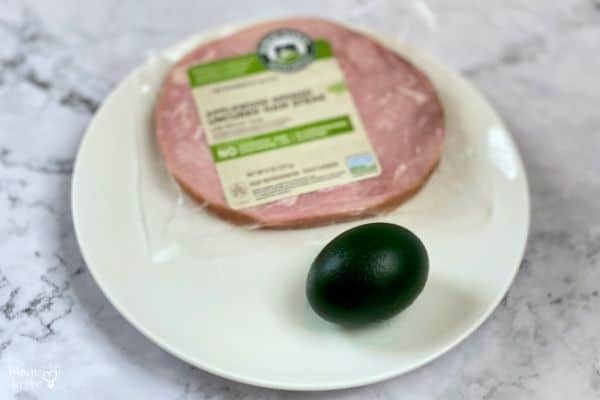
Green Eggs and Ham by Dr. Seuss is one of the most famous children’s books of all time – and it’s easy to see why! Not only does the book contain silly rhymes and ridiculous situations that kids find hilarious, but it also is easy to read for beginner readers.
The question is, how do you turn eggs green? There are several ways, but one of our favorite methods to creating a green egg is by soaking it in vinegar!
We learned in the bouncy egg experiment how to turn a raw egg into one that can bounce on a plate. Don’t believe me? Read on for this awesome Naked Green Eggs and Ham Science Experiment that will amaze your kids!
Naked Green Eggs and Ham Science Experiment
Supplies:
- Egg
- Vinegar
- Green food coloring
- Jar with lid
- Plate
Instructions:
1. Pour vinegar into the jar. How much vinegar will depend on the size and dimensions of your jar. You want to pour enough vinegar so that the vinegar covers the egg entirely.
2. Place the egg carefully in the jar. If the mouth of the jar is wide enough, you may be able to reach in with your hands or a pair of tongs to gently place the egg on the bottom of the jar.
Otherwise, I recommend tilting the jar as much as possible without letting the vinegar leak out. Using the other hand, place the egg as far in as you can in the jar (the egg should be in the vinegar). Then slowly move the jar upright.
This is the most difficult part of this green egg experiment. If you drop the egg in the jar from too high, then the egg might crack. If your egg did crack slightly, then take it out and replace it with another egg.
If your egg cracked and a lot of egg white and yolk leaked out, then you might need to pour out all the vinegar and restart with a clean jar and fresh vinegar.
3. If the vinegar does not cover the entire egg, pour more vinegar in the jar so that the egg is submerged in the acid. Squeeze a few drops of green food coloring in the vinegar. Stir gently to combine.
4. Place the lid on the jar and leave the egg for at least 2-3 days.
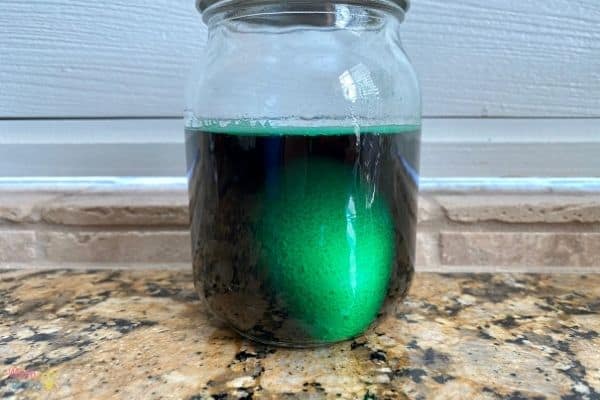
5. Check back each day and make observations on the egg’s appearance. We left the egg in the jar for 5 days total for this green eggs and ham science experiment. After the egg starts to become translucent, you can take it out of the jar. You might want to wear gloves because the food coloring will stain your hands for a few days.
Carefully take the egg out of the jar and rinse it under running water. Make sure you don’t rub the egg too hard, or else you might pop the thin membrane that is left around the egg white and yolk.
6. Try bouncing the egg on a plate. Hold the egg about 1-2 inches above the plate and let it go. You can have your kids predict what they expect to happen when you drop the egg and see if their hypothesis is correct.
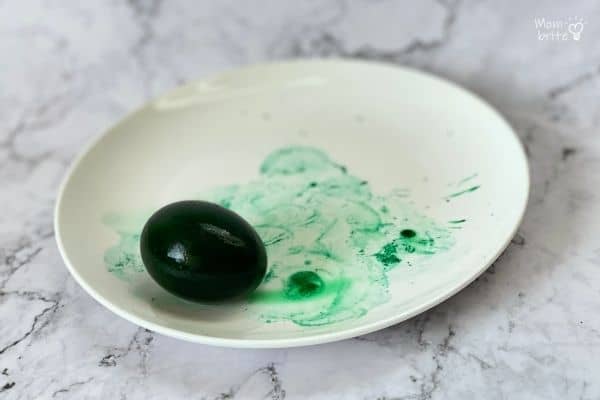
7. After your kids are done playing with the naked egg, you have a couple of options for breaking the egg.
You can drop the egg from a greater height and watch the egg splat all over the plate. This is what we did in the original bouncy egg experiment.
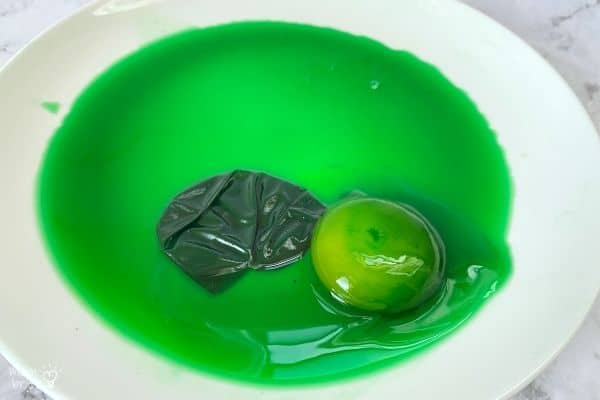
You can also take a toothpick or skewer and pierce the egg. Take a look at the video below to see what happened when we poked a hole in the egg!
After the egg has popped, you can take a closer look at the semipermeable membrane. It almost seemed like the membrane turned into rubber. My kids thought it felt “gross,” but I thought its texture was kind of cool.

Make sure you wash your hands thoroughly with soap after this experiment.
Science Behind the Naked Egg Experiment
Eggshells are made of calcium carbonate. When you submerge the egg in vinegar, the calcium carbonate and the acetic acid in the vinegar react to make calcium acetate, water, and carbon dioxide.
That’s why if you look closely at the egg while it’s in the vinegar, you see bubbles all around the eggshell. Then after about 24 hours, the bubbles float up and you have what looks like foam at the top of the vinegar.
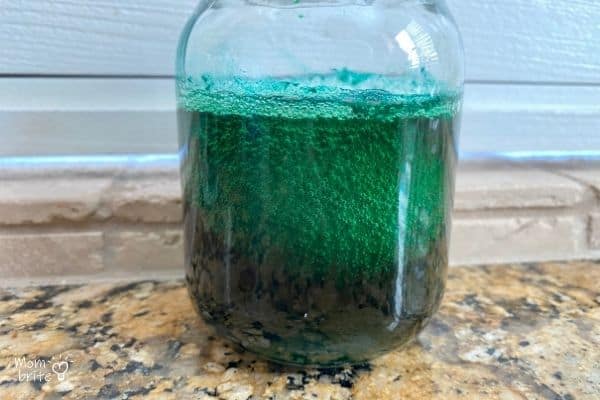
After a few days, the eggshell has completed disappeared and now the egg should look translucent (hence the term “naked” egg). There is a thin membrane called the semipermeable membrane that is holding the inside of the egg together.
This semipermeable membrane allows certain substances to pass through. You may notice that your egg has gotten bigger, and that’s because some of the water in the vinegar solution has traveled through the semipermeable membrane in order to equalize the concentration of water inside and outside the egg. This process is called osmosis and will continue until there are equal concentrations on both sides.
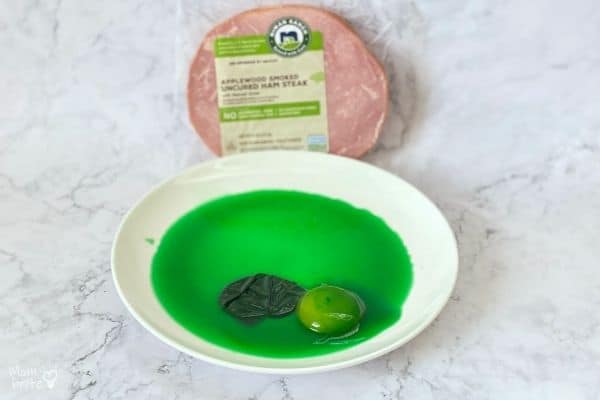
With the addition of green food coloring, you can really see that the water has moved inside the egg. When you break open the naked egg, you can see that the egg white has turned green as well.
Can You Eat the Green Naked Egg?
The simple answer is no, you cannot eat the green naked egg. It’s a raw egg after all, and you should not be eating uncooked eggs. Raw eggs may contain Salmonella, a bacteria that can get you really sick. Let’s stick to bouncing and playing with this green naked egg rather than ingesting it.
The kids might be hungry anyway after reading Green Eggs and Ham and doing this science experiment. Head over to the edible green eggs and ham science experiment to discover how you can turn egg whites green without food coloring!
I hope you and your kids enjoyed this green naked egg and ham experiment. My kids asked me if we could dye the ham as well since technically the ham is green in the book. Perhaps that’s another activity for another day.
Related Posts:
